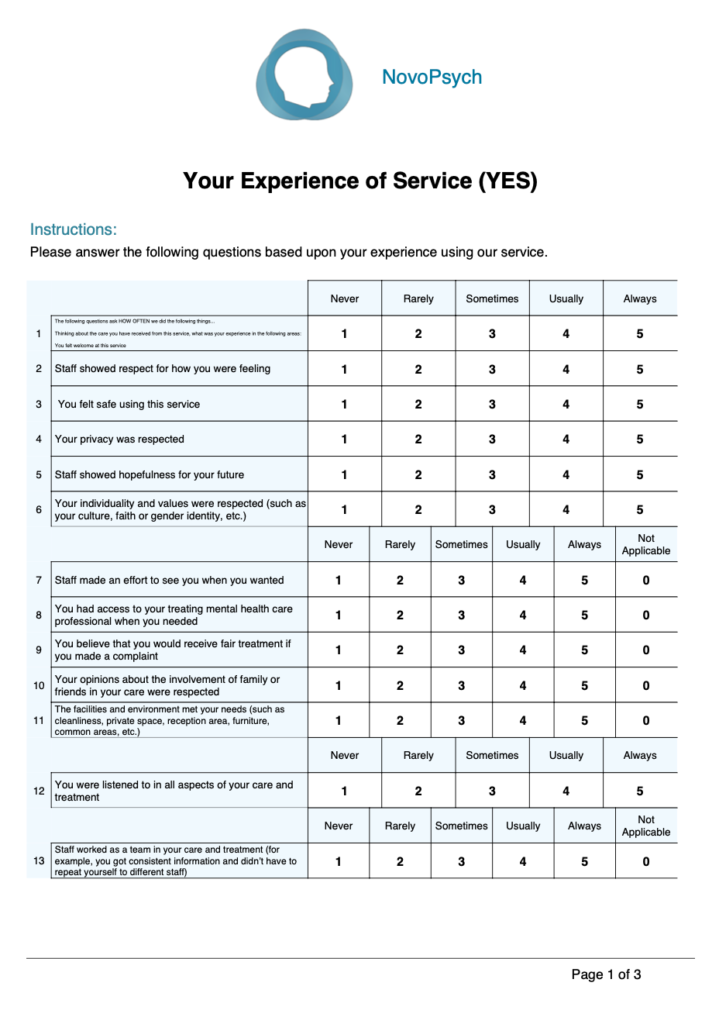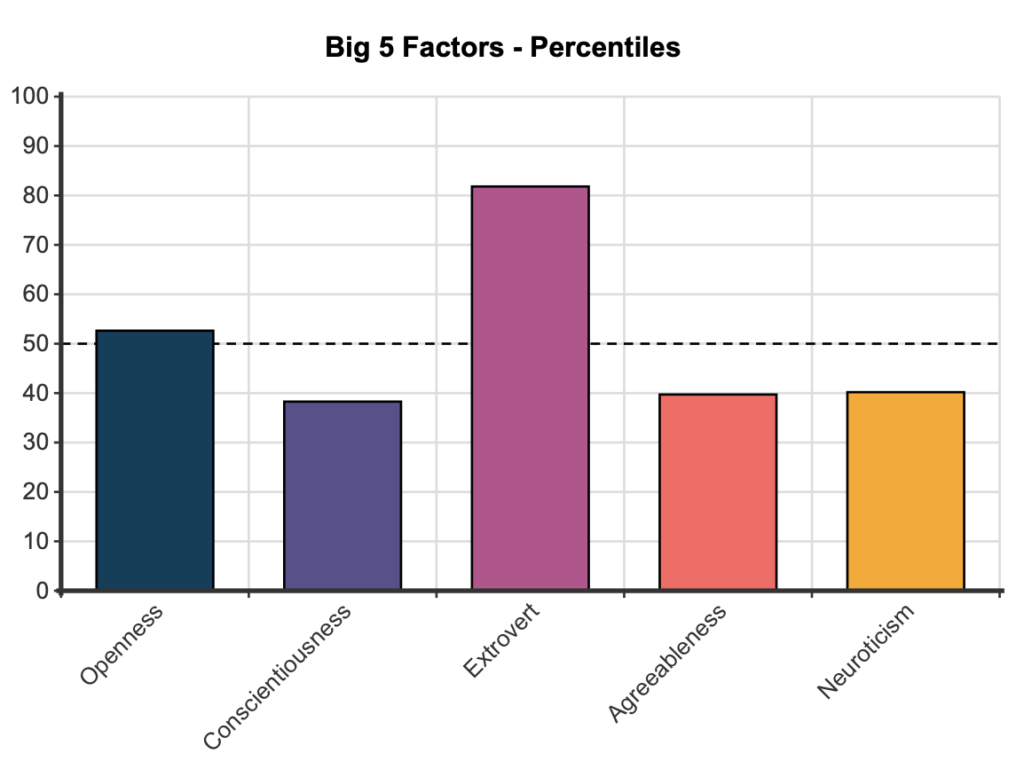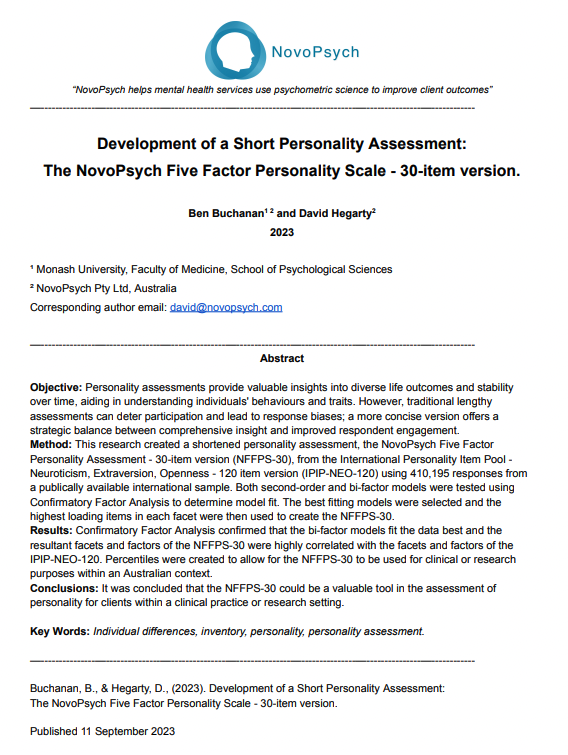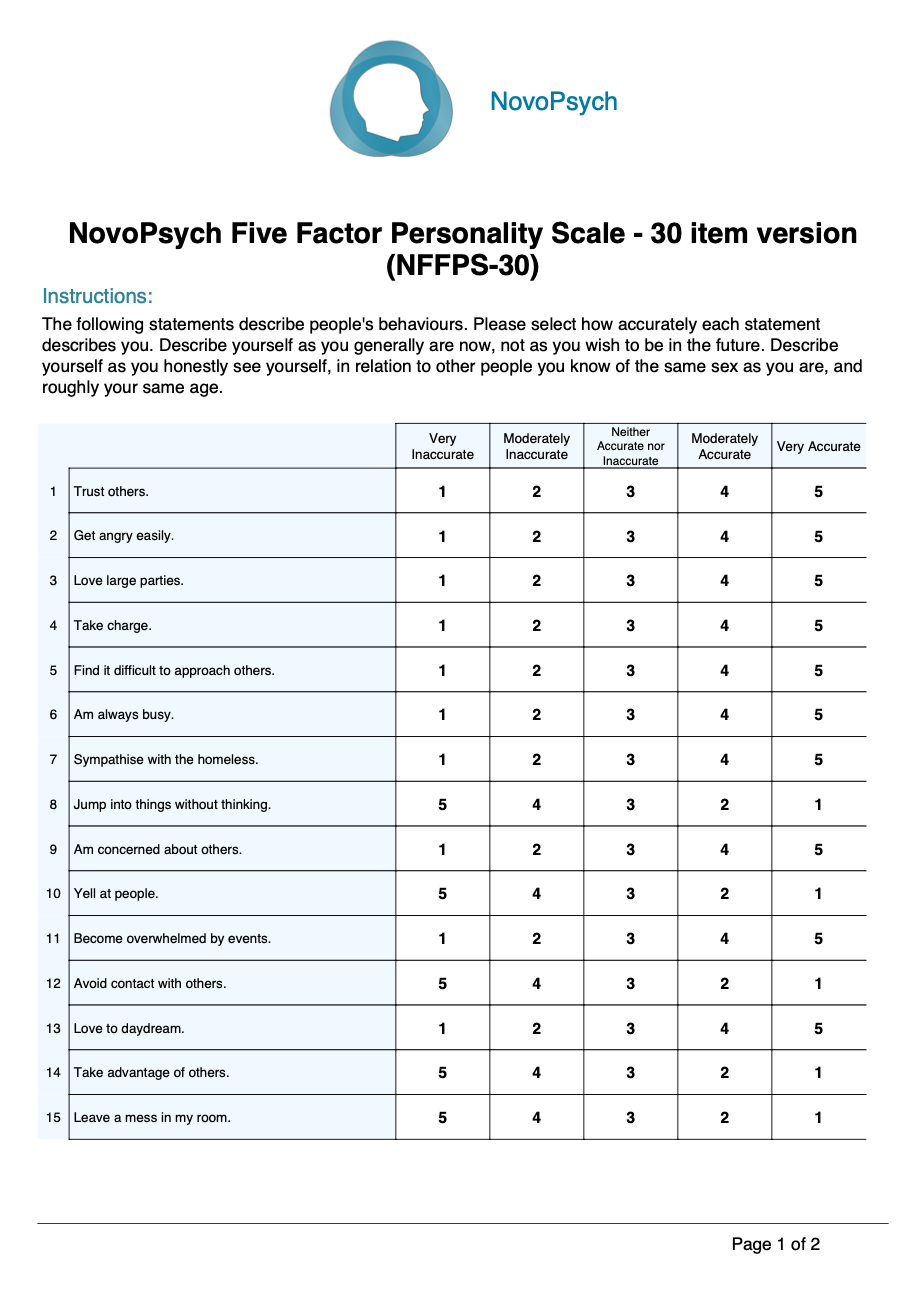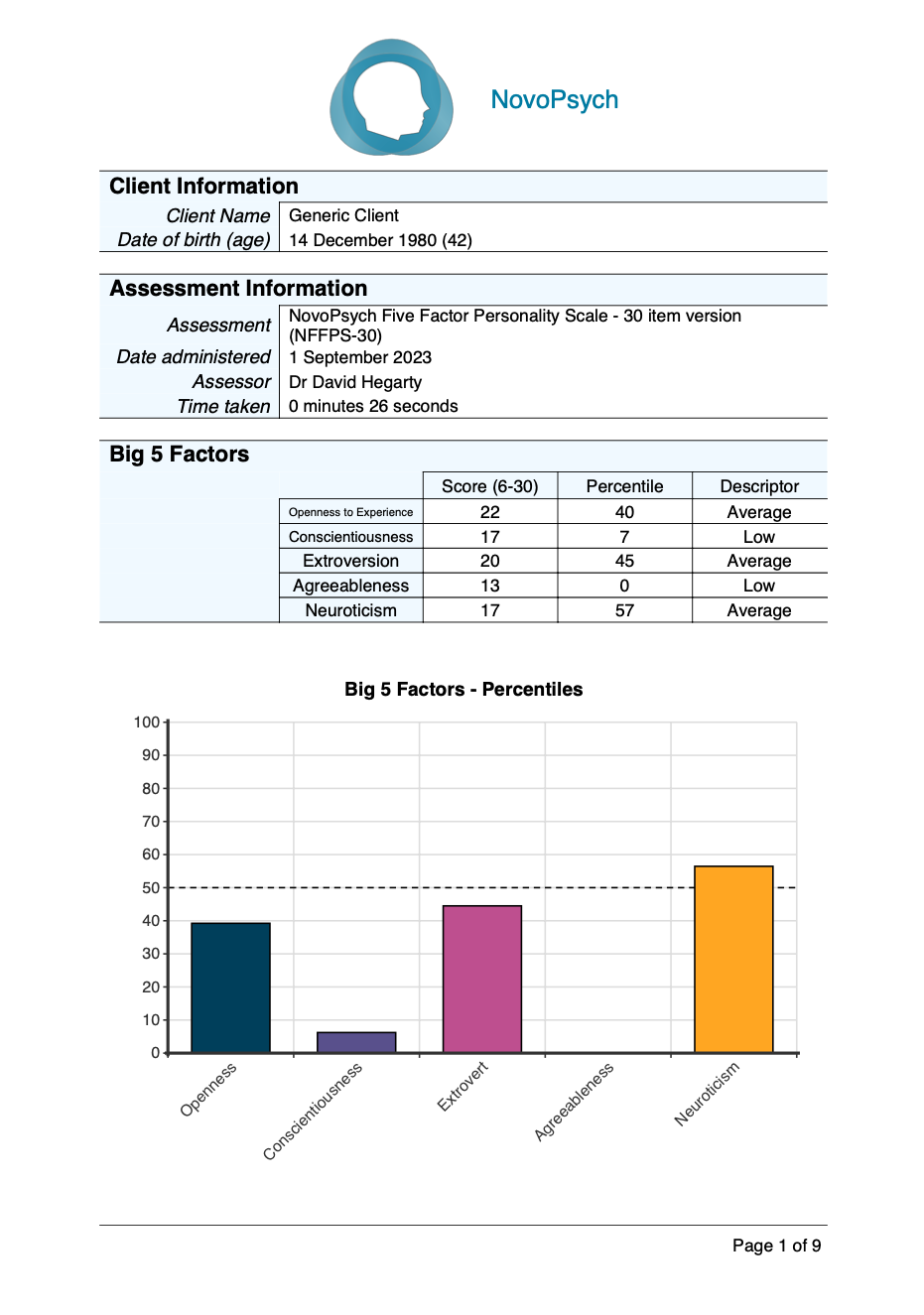Info NovoPsych
The Your Experience of Service (YES) assessment is a tool used to measure a client’s experience of mental health care and is a frequently used measure for assessing service levels in government health departments. The YES was developed by the Secretary to the Department of Health (Victoria) with funding from the Australian Government Department of Health (Victorian Department of Health, 2013). The YES has 26-Likert scale questions and 2 open-ended questions and was designed for use with adults (18+).
- 5 minutes
- Ages 18+
- Feedback-informed
The YES was designed to inform local service improvement referenced by the recovery principles of the 2010 National Standards for Mental Health Services and was trialled in adult public mental health services in four jurisdictions in six settings spanning acute inpatient and site based community settings. It has been developed with extensive consumer involvement spanning project design, implementation and evaluation through: literature reviews, consumer consultations, consumer workshops, consumer cognitive interviews, trial site engagement, training of consumer workers, qualitative evaluation activities and instrument refinement activities.
It provides two overall scores that reflect the client’s experience of service: (1) the experience (or frequency of satisfactory care); and (2) the performance (or outcome of care). There are also six domains that further break down the client’s experience:
- Making a difference
- Providing Information & Support
- Valuing Individuality
- Supporting Active Participation
- Showing Respect
- Ensuring Safety and Fairness
The YES is a simple and brief assessment that spans a breadth of concepts which will meaningfully inform service improvement.
The total sum of numerically assigned values are added separately to yield two overall scores for (i) Frequency Scale (Experience items – items 1 to 22) and (ii) Performance Scale (Outcome items – items 23, 24, 25). These totals are then divided by the number of items completed (ignoring any NA responses) to calculate an average score. The average score can then be used to determine a descriptor for each scale (i.e., an average score less than 1.5 = “Never” or “Poor”, less than 2.5 = “Rarely” or “Fair”, less than 3.5 = “Sometimes” or “Good”, less than 4.5 = “Usually” or “Very Good” and 5 or less = “Always” or “Excellent”). A higher average score is indicative of a better experience of service.
There are also 6 domains that are assessed. An average score is reported using the method outlined for the two overall scores (i.e., not including items where an NA response was indicated). A higher average score is indicative of a better experience of service within these domains:
- Making a difference (Items 23, 24, 25, 26): This domain describes how the service contributes to outcomes for individuals. It includes social and emotional wellbeing and physical health
- Providing Information & Support (Items 18, 19, 20, 21): This domain describes how the service works for the individual. It includes resources such as written information, a care plan, and access to peer support
- Valuing Individuality (Items 6, 16): This domain describes how the service meets an individual’s needs. It includes sensitivity to culture, gender and faith and the importance of personal values and beliefs
- Supporting Active Participation (Items 8, 10, 13, 14, 15, 17): This domain describes how the service provides opportunities for engagement, choice and involvement in the process of service delivery
- Showing Respect (Items 1, 2, 4, 5, 7, 12): The domain describes how the service provides the individual with a welcoming environment where they are recognised, valued and treated with dignity
- Ensuring Safety and Fairness (Items 3, 9, 11): This domain describes how the service provides individuals with a physically and emotionally safe environment
Trial findings corroborate the instrument’s psychometric robustness and consumer acceptability (Victorian Department of Health, 2013). The survey instrument clearly addresses areas of policy and practice concern to consumers, service providers and policy makers, namely a commitment to the implementation of recovery oriented care. Further details on psychometric properties can be seen here with updated details here.
Developer
Victorian Department of Health (2013). National Mental Health Consumer Experiences of Care Report – Final Report – Development and Evaluation of a Consumer Experiences of Care Survey Instrument. Available at: https://www.amhocn.org/__data/assets/pdf_file/0008/699020/ceoc_final_report.pdf
References
Australian Mental Health Outcomes and Classification Network. (2020). Reporting domains of the experience of service measures: YES, YES CMO, YES PHN, CES. (Version 1.1). Available at: https://www.amhocn.org/__data/assets/pdf_file/0004/700195/reporting_domains_of_yes_yes_cmo_yes_phn_ces_20200416.pdf



